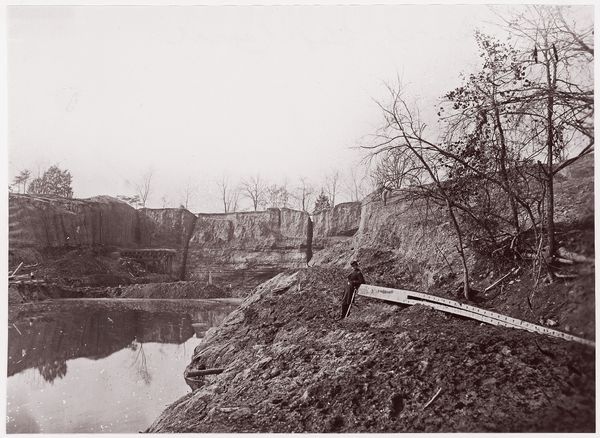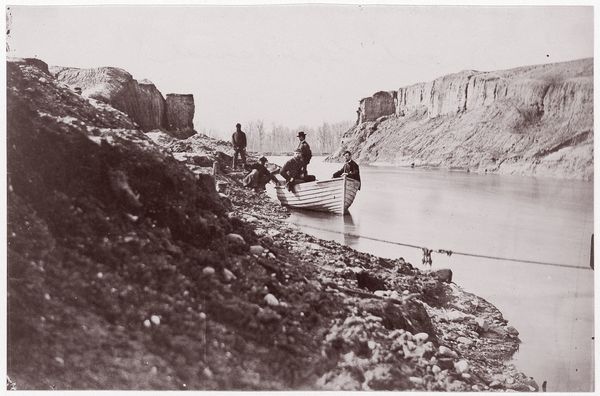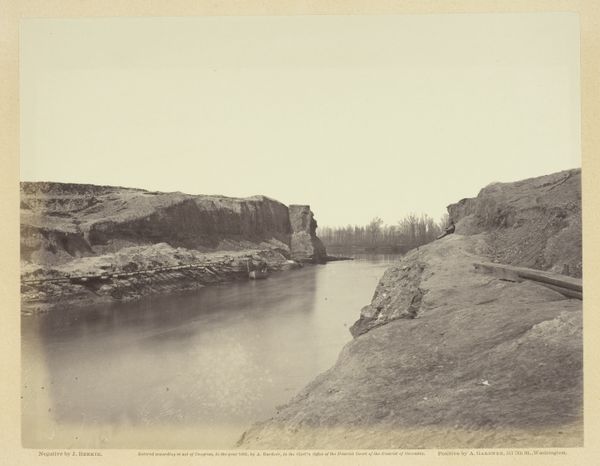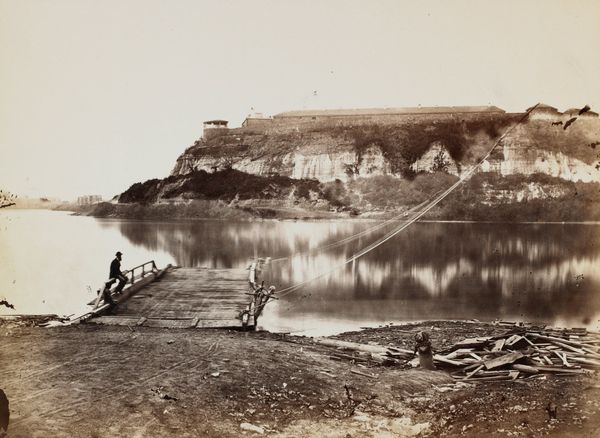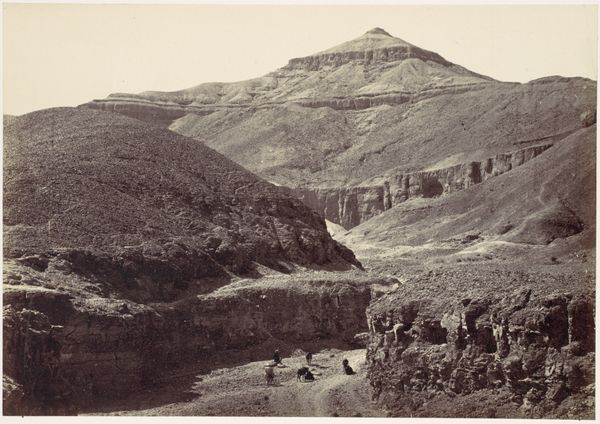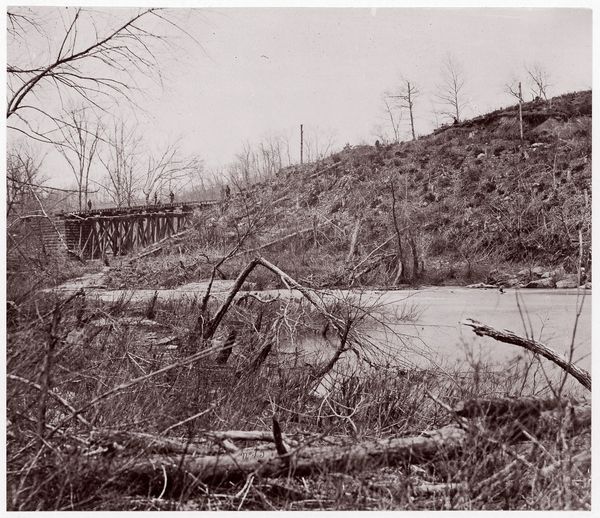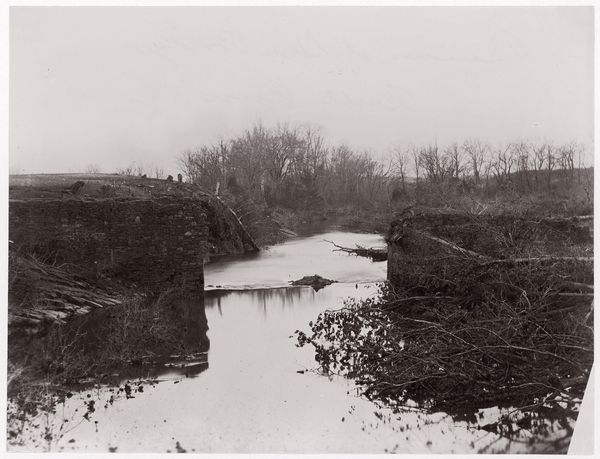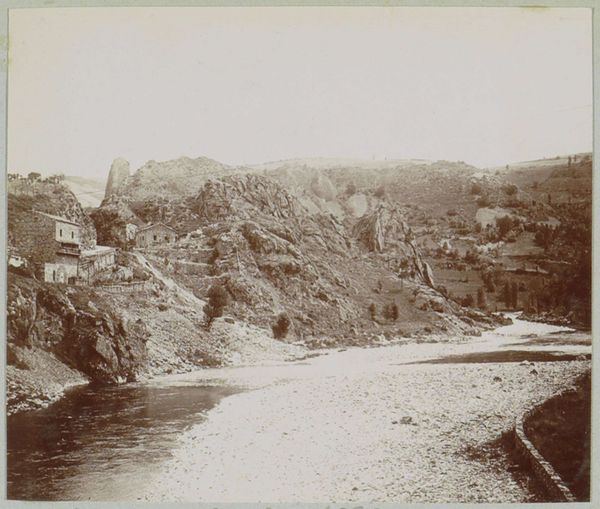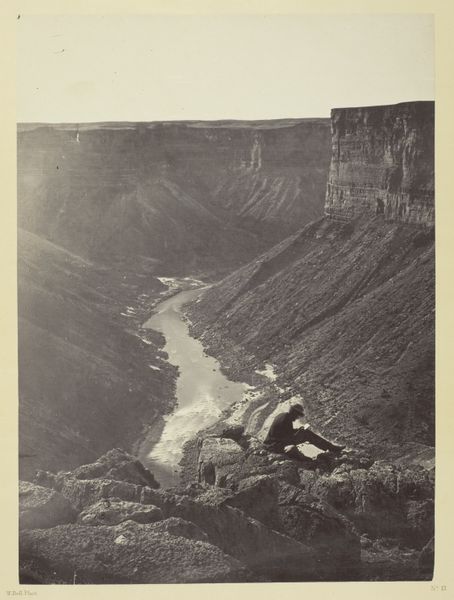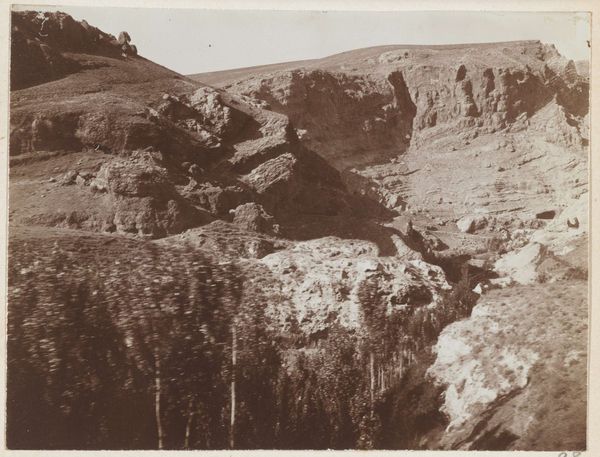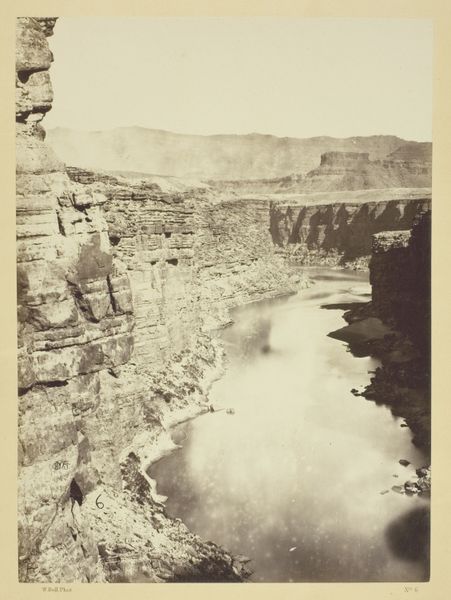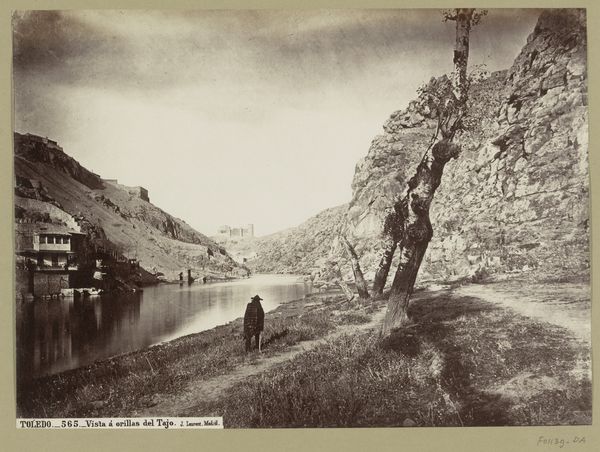
photography, gelatin-silver-print
#
black and white photography
#
war
#
landscape
#
nature
#
photography
#
gelatin-silver-print
#
monochrome photography
#
realism
Copyright: Public Domain
Editor: We’re looking at Andrew Joseph Russell’s 1865 photograph, “Dutch Gap Canal,” a gelatin-silver print currently housed at the Metropolitan Museum of Art. What immediately strikes me is the contrast – the jagged, earthy banks against the smooth, reflective water. What do you make of this stark composition? Curator: The dynamism lies in the arrangement of tonal values. Note how the artist deploys a near symmetrical composition with each bank functioning as a mirror. Russell's photograph highlights the geometric shapes of this man-made canal against the ostensibly neutral, planar body of water. Editor: The figures seem small against such massive earthworks. Was that a common approach? Curator: Scale is significant. Consider the interplay between human form and geological presence, but further abstracted and refined into pure form. What are your impressions on how the stark monochrome of the image plays into the impact? Editor: I think it makes it even starker. Without color, all you are left with is texture, shadow, shape and composition. It lends a timeless quality. Curator: Precisely. It allows the elemental forms to become the sole conveyors of meaning. This canal becomes not simply a place, but an interplay of shapes, texture, and ultimately pure visual relationships of a scene charged with historic meaning. Editor: I appreciate the way you frame it in terms of shapes. I hadn't looked at the photo quite like that. Curator: Paying close attention to form and how line, shape, and mass converge can unlock further understanding of any art piece. Editor: Thanks. Now I want to go look at other photos and apply what you showed me.
Comments
No comments
Be the first to comment and join the conversation on the ultimate creative platform.
